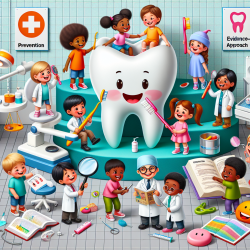Dental trauma is a frequent occurrence in children and adolescents, making correct diagnosis and treatment essential for a favorable long-term prognosis. The Italian guidelines for the prevention and management of dental trauma in children, developed by a multidisciplinary panel on behalf of the Italian Ministry of Health, provide evidence-based recommendations that can significantly improve outcomes for young patients.
These guidelines address four critical queries:
- What precautions should health personnel, parents, sports, and educational personnel take to prevent dental trauma?
- How should orofacial trauma in pediatric patients be managed in emergency care and private dental offices?
- What criteria should dentists use to fill out certificates for dental and/or temporomandibular joint (TMJ) trauma in children and adolescents?
- What elements should lead clinicians to suspect non-accidental dental trauma?
The guidelines emphasize the importance of prevention and health education. For instance, they recommend that educational institutions organize training courses for teachers, school employees, and students to identify and reduce risks of dental trauma. This can be achieved through the use of videos, brochures, and manuals, which have been shown to be effective in communicating educational messages.
First aid in orofacial and dental trauma is another critical area covered by the guidelines. Prompt and appropriate treatment, such as the reinsertion of an avulsed tooth stored in a proper medium like saline solution or milk, can significantly improve prognosis. The guidelines also recommend including sterile saline solution vials in first-aid kits to facilitate immediate intervention.
The guidelines also address the medico-legal implications of dental trauma. Accurate documentation and clear, detailed certificates are crucial for legal and compensation purposes. The guidelines provide simple rules for writing certificates, ensuring they include all necessary details about the trauma, clinical evidence, and prognosis.
Lastly, the guidelines highlight the importance of recognizing dental trauma resulting from neglect or abuse. Health professionals, including dentists, are legally obliged to report suspicions of abuse. The guidelines recommend a thorough examination of the head and neck, in addition to the oral cavity, to identify signs of abuse or neglect.
By implementing these guidelines, practitioners can improve their skills in managing dental trauma in children and adolescents, leading to better outcomes for their young patients. To read the original research paper, please follow this link: Italian guidelines for the prevention and management of dental trauma in children.










